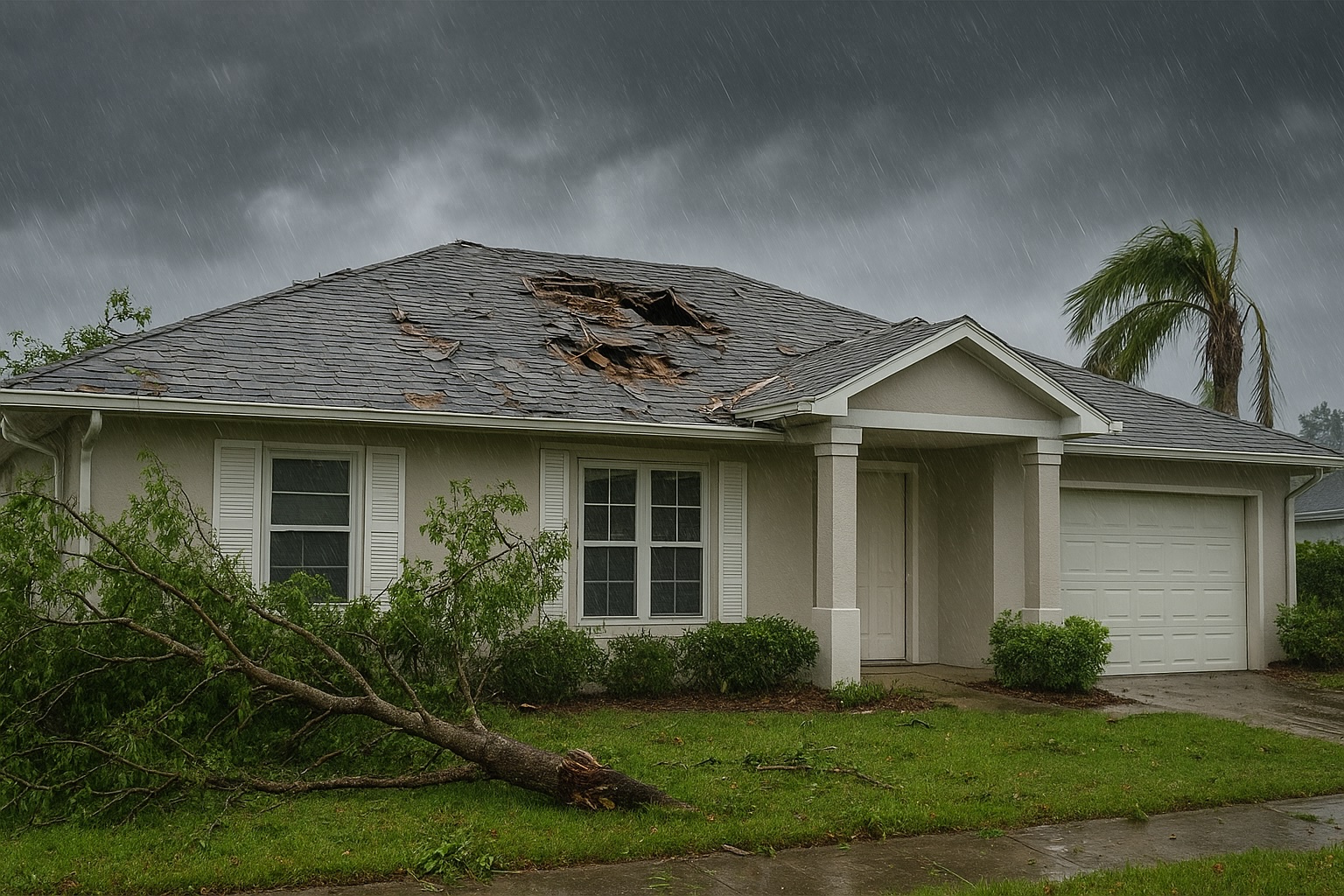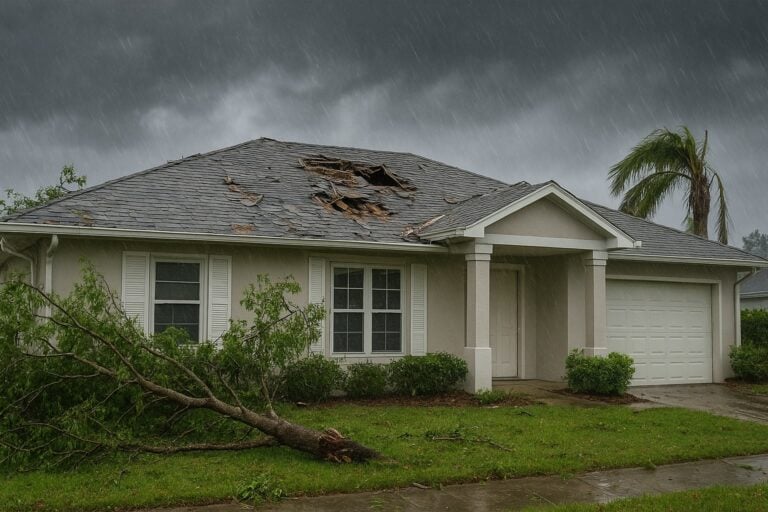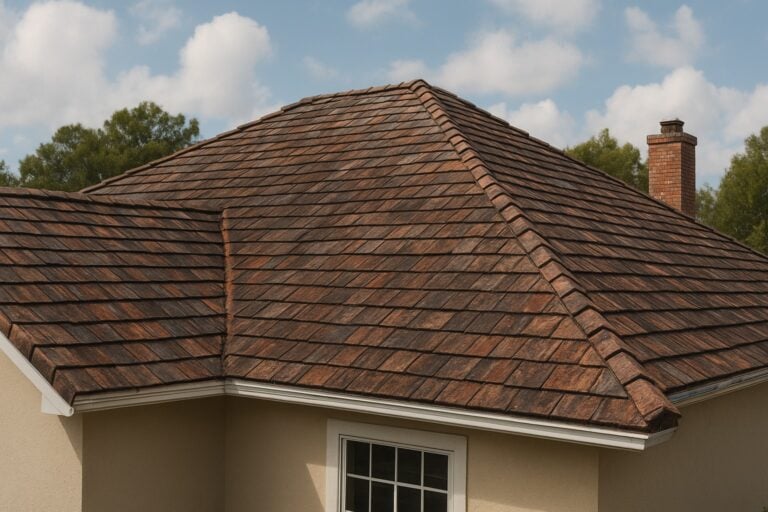When we purchase our first home in the Tampa Bay area, hurricane season becomes something we cannot ignore. With the ever-increasing strength of tropical storms, we must prepare proactively—especially regarding protecting our roof, walls, water defenses, landscaping, and personal safety. Below, we offer an in-depth, practical guide that helps every first-time homeowner confidently navigate hurricane season.
In Riverview and throughout Florida, Steadfast Roofing stands ready to assist with roof inspections, upgrades, and repairs.
Understanding Hurricane Season & Local Risks
- Timeline & Severity
Hurricane season runs from June 1 through November 30. While not every storm directly hits Riverview, we must monitor tropical depressions, storms, and potential hurricane paths daily. Storm surge, heavy rain, and damaging wind gusts are among the most likely hazards. - Local Geography Impacts
Because Riverview lies near coastal zones and is bordered by rivers and wetlands, we face not just wind damage but also flooding. Low-lying areas are especially vulnerable during prolonged rainfall. Soil saturation affects flood risk, and nearby water bodies can overflow quickly.
Pre-Season Preparations: Roof & Structural Readiness
- Full Roof Assessment
We inspect the age of roofing materials, the condition of shingles, flashing around chimneys/skylights, seams, and edges. Identify any missing, curled, or loose shingles. Check for soft spots in the decking. Ensure gutters, downspouts, and drainage systems are clear and properly secured to prevent water pooling. - Upgrade & Strengthen Roof Components
Where possible, reinforce roof-to-wall connections, install hurricane straps or clips if not present, and ensure roofing systems exceed local wind-rating building codes. Use roofing materials rated for high wind speeds (e.g., certain metal roofs, asphalt shingles with high wind resistance, impact-resistant tiles). - Seal Openings & Vulnerable Areas
Seal joints, vents, and gaps that could allow wind or water intrusion. Storm doors, windows, and shutters should be tested; ensure all window seals and framing are intact. Trim trees and loose branches around the house. Loose exterior items (decor, furniture) should be stored away or anchored.
Preparing Other Critical Home Components
- Waterproofing & Drainage
Ensure grading around the foundation slopes away from the house. Install or maintain French drains, sump pumps, or backflow valves. Inspect basements or crawlspaces for moisture issues; waterproof where necessary. - Power & Utilities Backup
Consider backup power sources like generators, secure gas lines, and propane tanks. Reinforce electrical panels, wiring, and ensure outdoor utility boxes are storm-rated. - Interior & Safety Preparations
Create an emergency kit (food, water, medicine, lighting, first-aid), and inventory and photograph valuables for insurance. Develop a family evacuation plan and familiarize yourself with local and emergency shelters in Hillsborough County. Keep critical documents in waterproof containers.
What To Do as Storms Approach
- Monitoring & Alerts
Stay tuned to NOAA, the National Hurricane Center, and local authority updates. When watches or warnings are issued, double down on securing your property. - Securing the Home
Close and lock all windows and doors. Deploy shutters or discuss plywood boarding if in vulnerable locations. Bring inside all loose objects like outdoor furniture, grills, and anything that could become airborne. - Final Roof Check
Inspect (from a safe position) if any shingles are loose or missing. Ensure gutters are clear. Temporary tarps might be applied to cover vulnerable spots if repair isn’t immediately possible.
Post-Storm: Inspection & Recovery
- Damage Assessment
After the storm, once safe, inspect the roofing, windows, doors, and foundation for any signs of damage. Look for leaks inside ceilings or walls, missing roofing material, warped frames, or loose siding. - Professional Inspections
We recommend getting a licensed roofing contractor to thoroughly inspect structural supports, underlayment, fasteners, and interior water damage. Address even minor leaks immediately to prevent mold, rot, or structural compromise. - Submit Insurance Claims Promptly
Document everything with photos and notes. Obtain repair estimates. Coordinate with your insurer and use professionals who understand local construction codes and hurricane damage assessment.
Maintenance & Long-Term Resilience
- Regular Maintenance
Biannual checks—once before the season starts, once mid-season—help catch developing issues early. Maintain landscaping to avoid fallen trees. Clean gutters and downspouts regularly. Address wear and tear immediately. - Investing in Resilient Materials
Choose roofing materials designed for high wind, impact resistance, and moisture protection. Consider metal roofs, impact-resistant shingles, and reinforced sheathing. Similarly, windows and doors rated for storm load make a huge difference. - Stay Updated on Building Codes & Incentives
Local authority updates may mandate changes in anchoring, materials, or structural reinforcement. Look for incentive programs for storm-resilient upgrades.
Costs to Expect & Budgeting Wisely
| Preparation Stage | Typical Costs (Riverview, FL Area) | What Affects the Price |
| Roof inspection & repair | $300–$1,200+ depending on scope | Roof size, material, and damage |
| Full roofing upgrade/replacement | $8,000–$20,000+ | Material quality, slope, features (chimneys, skylights) |
| Storm shutters/window protection | $1,500–$5,000 | Number of windows, type of protection |
| Backup power/utility protection | $500–$5,000 | Generator size, installation complexity |
| Flood control/landscaping prep | $500–$4,000 | Landscape grading, drainage systems |
We encourage allocating an emergency repair fund as well—so we’re not scrambling immediately after a storm.
Local Resources & Regulations
- Building Permits in Hillsborough County
Always verify permit requirements before structural or roofing projects. Work without proper permits may lead to insurance claim denials. - Approved Materials & Installer Certifications
Use installers licensed in Florida, experienced with hurricane-resilient installations. Materials should meet Florida’s wind and impact standards. - Community Preparedness Plans
Understand neighborhood evacuation routes, community flood risk maps, and shelter locations. Local emergency management offices often provide free resources and workshops.
Conclusion
For first-time property owners in Riverview, FL, hurricane readiness isn’t optional—it’s essential. Thorough prep before the season, wise choices during storms, and disciplined recovery steps ensure safety, preserve value, and give peace of mind. Investments in roof strength, water protection, and structural resilience pay dividends long after the skies have cleared.
Read one of our latest blogs: “Best Months for Residential Roof Replacement: A Season-by-Season Guide”.




